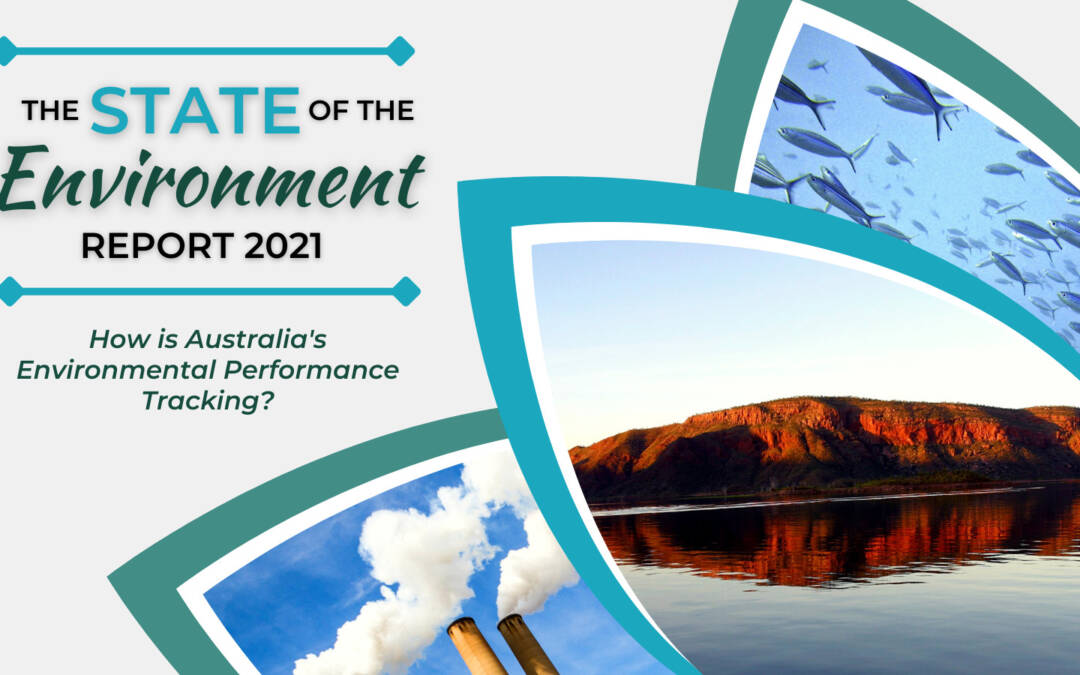The latest State of the Environment (SoE) Report for 2021 was released on Tuesday, 19 July 2022, by the federal Minister for Environment and Water.
The report is a comprehensive assessment of the state of Australia’s environment that is produced every five years by the Australian Government. It is an independent and evidence-based review that is mandated by the Environment Protection and Biodiversity Conservation Act 1999 (CSIRO, 2022).
What is the purpose of the SoE report?
The 2021 report combines scientific, traditional and local knowledge to provide a rigorous, peer‑reviewed assessment of every aspect of the environment (Australian Government, 2022). The SoE report assesses the changing condition of our natural environment across 12 themes being:
- Air quality
- Antarctica
- Biodiversity
- Climate
- Coasts
- Extreme events
- Heritage
- Indigenous
- Inland water
- Land
- Marine
- Urban
Results and conclusions from the assessment are then used to:
- Help shape strategy, policy and action;
- Influence behaviours of individuals, communities and businesses; and
- Assist in assessing our actions as stewards of the Australian environment.
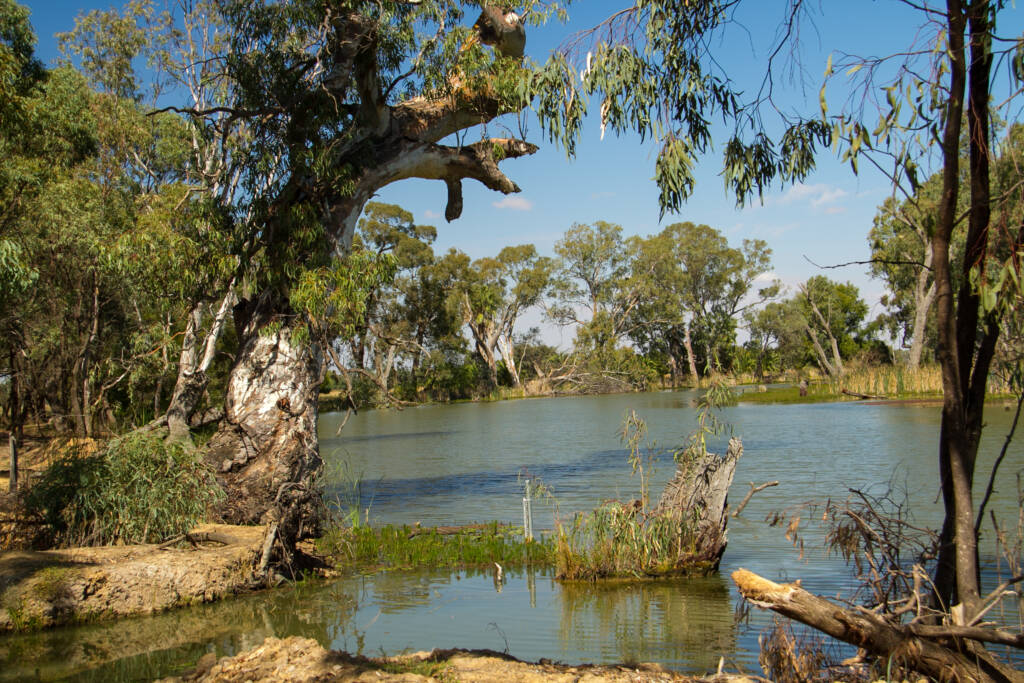
How is Australia tracking with their environmental performance?
The SoE Report for 2021 has concluded that the general overall outlook for our environment is deteriorating. This is a result of increasing pressures from climate change, habitat loss, invasive species, pollution and resource extraction (CSIRO, 2022).
Below is a tabled overview of ratings given for each theme assessed. An explanation of the grade and trend ratings can be found in further detail in the SoE Report overview (Australian Government, 2022).
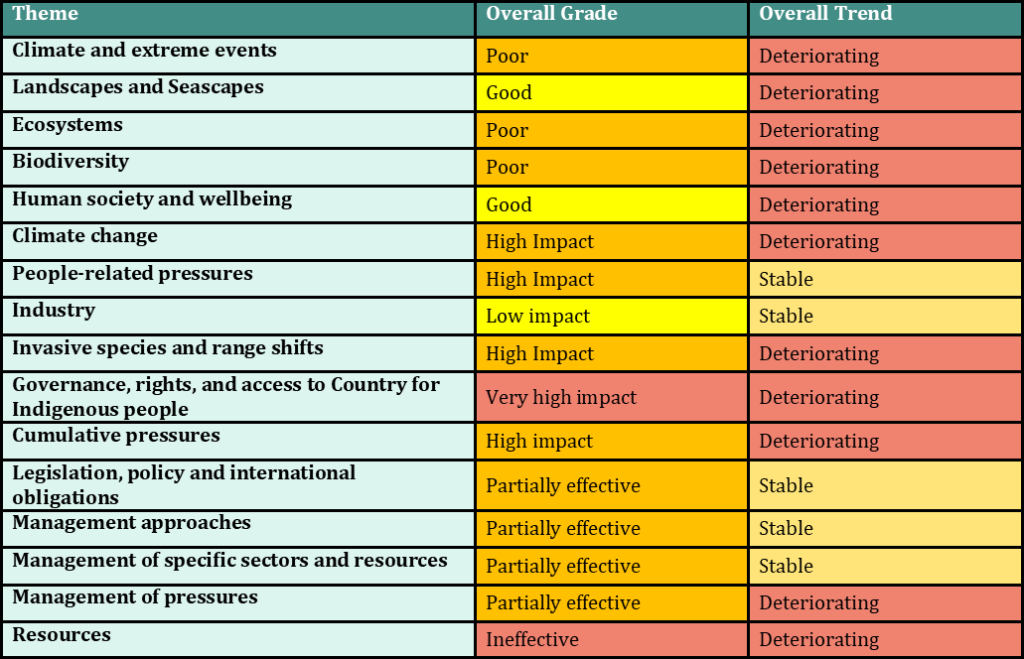
Interesting findings from the SoE 2021
The 2021 SoE report is a lengthy report with many findings and conclusions. Below are a few of the less typically published findings from the 2021 SoE report.
Some findings that are worth celebrating.
- Indigenous knowledge and management are helping to deliver on-ground change. Participation in Caring for Country activities by Indigenous people in Australia is improving health and wellbeing outcomes, as well as greater participation in cultural activities and knowledge of language.
- The ecosystem services that soils deliver are valued at an estimated $930 billion per year, making soils Australia’s most valuable natural asset.
- Slight increases in below-ground carbon stocks have been detected where land use is stable under forests.
- Individuals, non-government organisations and businesses are increasingly purchasing and managing significant tracts of land for conservation.
- In the south-west of WA, measures to reduce and redistribute groundwater extraction have resulted in groundwater trends in the previous 5 years being mostly stable.
- The sustainability of the commercial harvesting of Australia’s diverse wild‑caught marine fisheries has improved over the past 5 years, with 86% of stock assessed in 2020 classified as not overfished.
- The Antarctic region has demonstrated the effectiveness of concerted, long‑term global action, with the annual hole in the ozone layer showing slow but continued evidence of shrinking.
- Water column habitats (chlorophyll‑a, zooplankton biomass and fish larval abundance) in the open ocean are currently healthy.
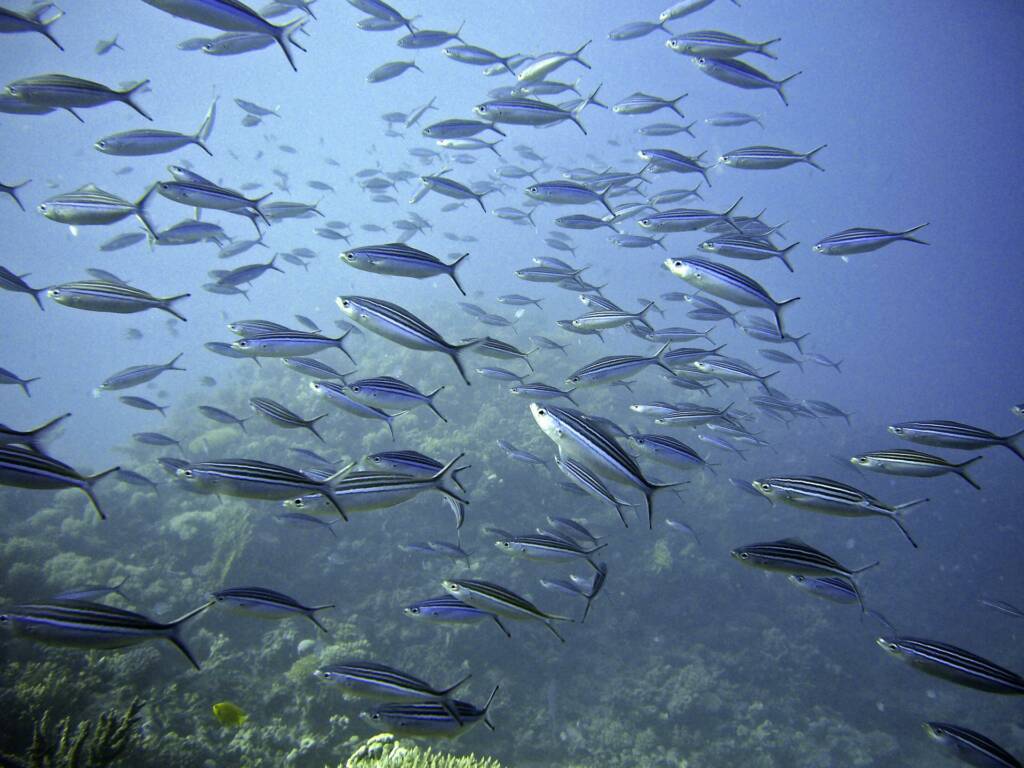
Some findings that need further focus….
- There are estimated to be 600 registered landfill sites and potentially as many as 2,000 unregulated facilities.
- A review on dryland salinity found that government agencies have not met wider legislated responsibilities to prevent and mitigate land degradation or protect water resources and biodiversity throughout the south‑west of WA.
- Of the 7.7 million hectares of land habitat cleared between 2000 and 2017, 7.1 million hectares (93%) was not referred to the federal government for assessment under the national environment law.
- The abundance of mosses in Antarctica is declining, reducing habitat for micro‑invertebrates.
- At least 19 Australian ecosystems are showing signs of collapse or near collapse.
- In June 2020, the Ramsar-listed wetland Lake Argyle in Western Australia was at its lowest end‑of‑year level in almost 30 years.
- The National Pollutant Inventory showed that industrial emissions of many pollutants such as PM10, sulfur dioxide, volatile organic compounds and mercury started increasing again in 2019, despite attempts to control them.
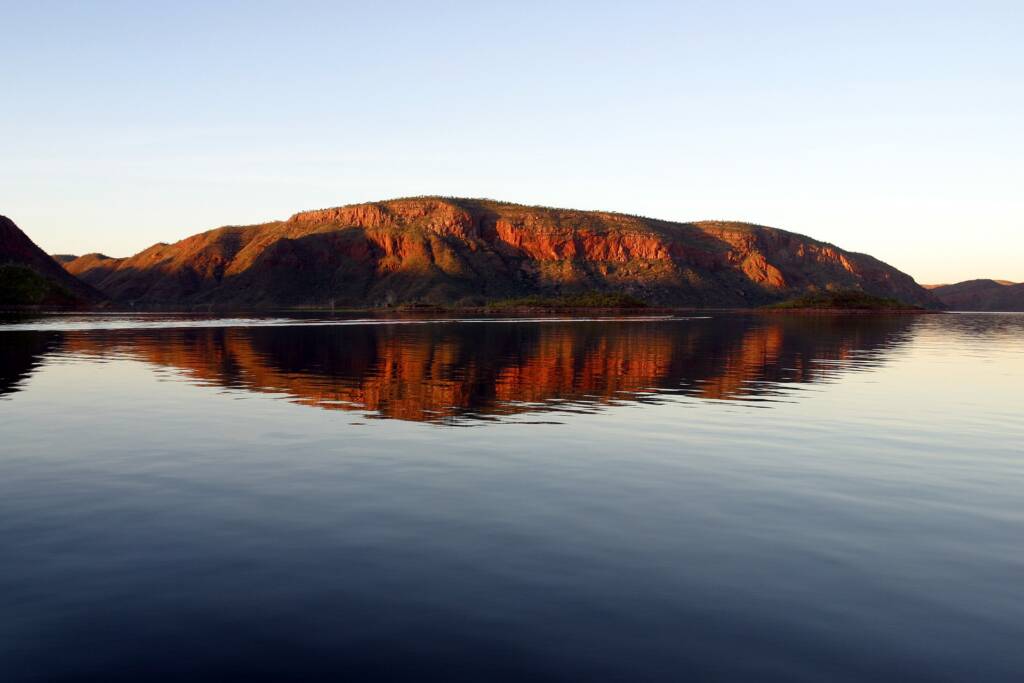
What next?
The next SoE report will be undertaken in 2026. In the meantime, emphasis has been given on continuing to build partnerships and innovations with businesses, individuals and non-government organisations (University of Sydney, 2022).
It has also been highlighted that increased government and industry funding as well as collaboration between government and non-government groups, is a key step in moving towards positive environmental progress (University of Sydney, 2022).
Finally, the increase in effort and resources towards measuring progress, as well as additional monitoring and reporting across all states and territories, is crucial to reverse the declines being seen across the environmental themes assessed (University of Sydney, 2022).
If your organisation is seeking assistance with environmental solutions or looking to incorporate sustainability into your projects, please contact us by email at enquiries@integratesustainability.com.au or call us on 08 9468 0338.
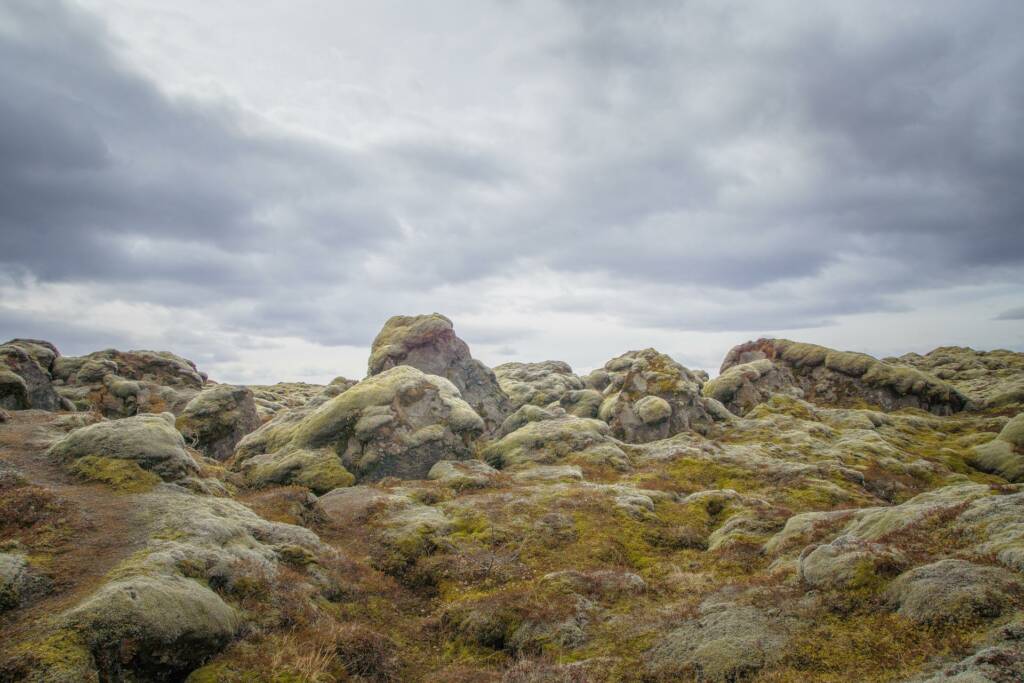
References
Australian Government. (2022, August 3). About SoE. Retrieved from Australia State of the Environment 2021: https://soe.dcceew.gov.au/about-soe/about-report
Australian Government. (2022, August 3). Downloads – Overview. Retrieved from Australia State of the Environment 2021: https://soe.dcceew.gov.au/sites/default/files/2022-07/soe2021-overview.pdf
CSIRO. (2022, August 3). Expert Commentary: State of the Environment 2021. Retrieved from CSIRO: https://www.csiro.au/en/news/news-releases/2022/state-of-the-environment-2021-report-released
University of Sydney. (2022, July 19). State of the Environment: report findings. Retrieved from News: https://www.sydney.edu.au/news-opinion/news/2022/07/19/state-of-the-environment–the-findings.html

